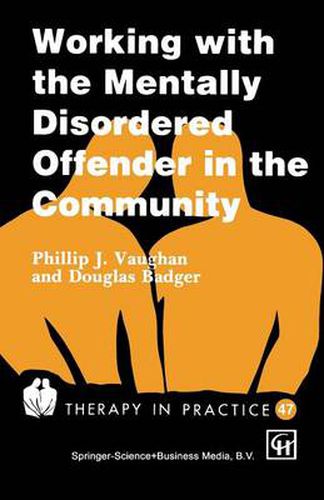Readings Newsletter
Become a Readings Member to make your shopping experience even easier.
Sign in or sign up for free!
You’re not far away from qualifying for FREE standard shipping within Australia
You’ve qualified for FREE standard shipping within Australia
The cart is loading…






This title is printed to order. This book may have been self-published. If so, we cannot guarantee the quality of the content. In the main most books will have gone through the editing process however some may not. We therefore suggest that you be aware of this before ordering this book. If in doubt check either the author or publisher’s details as we are unable to accept any returns unless they are faulty. Please contact us if you have any questions.
In the past forensic psychiatry has been a sub-speciality of general psychiatry without its own, separate identity. However, since the mid-1980s there has been a growing in terest in the application of community care principles to mentally disordered offenders. A new set of attitudes have developed which have enabled the mentally disordered offender to emerge from relative institutional obscurity to a much higher profile in the community. Although numerically small in relation to the general psychiatric population, forensic patients tend to attract the public’ s attention by virtue of their greater propensity for troublesome behaviour. Such a group needs expert community support in order to maintain an accepta bie public face. Unfortunately these developments have outstripped the creation of training opportunities for community staff charged with their support and supervision. Most community practi tioners have had to learn ‘on the job’ with inadequate support and supervision from senior staff, who of ten have less direct experience of working with this client group than themselves. Just such a situation prompted the authors, in 1990, to establish a module on ‘Working with Mentally Disordered Offenders in the Community’ as part of an MA in Social W ork at the University of Reading. As the course developed it became clear that the topic and content had equal application to other community professionals working in the field.
$9.00 standard shipping within Australia
FREE standard shipping within Australia for orders over $100.00
Express & International shipping calculated at checkout
This title is printed to order. This book may have been self-published. If so, we cannot guarantee the quality of the content. In the main most books will have gone through the editing process however some may not. We therefore suggest that you be aware of this before ordering this book. If in doubt check either the author or publisher’s details as we are unable to accept any returns unless they are faulty. Please contact us if you have any questions.
In the past forensic psychiatry has been a sub-speciality of general psychiatry without its own, separate identity. However, since the mid-1980s there has been a growing in terest in the application of community care principles to mentally disordered offenders. A new set of attitudes have developed which have enabled the mentally disordered offender to emerge from relative institutional obscurity to a much higher profile in the community. Although numerically small in relation to the general psychiatric population, forensic patients tend to attract the public’ s attention by virtue of their greater propensity for troublesome behaviour. Such a group needs expert community support in order to maintain an accepta bie public face. Unfortunately these developments have outstripped the creation of training opportunities for community staff charged with their support and supervision. Most community practi tioners have had to learn ‘on the job’ with inadequate support and supervision from senior staff, who of ten have less direct experience of working with this client group than themselves. Just such a situation prompted the authors, in 1990, to establish a module on ‘Working with Mentally Disordered Offenders in the Community’ as part of an MA in Social W ork at the University of Reading. As the course developed it became clear that the topic and content had equal application to other community professionals working in the field.